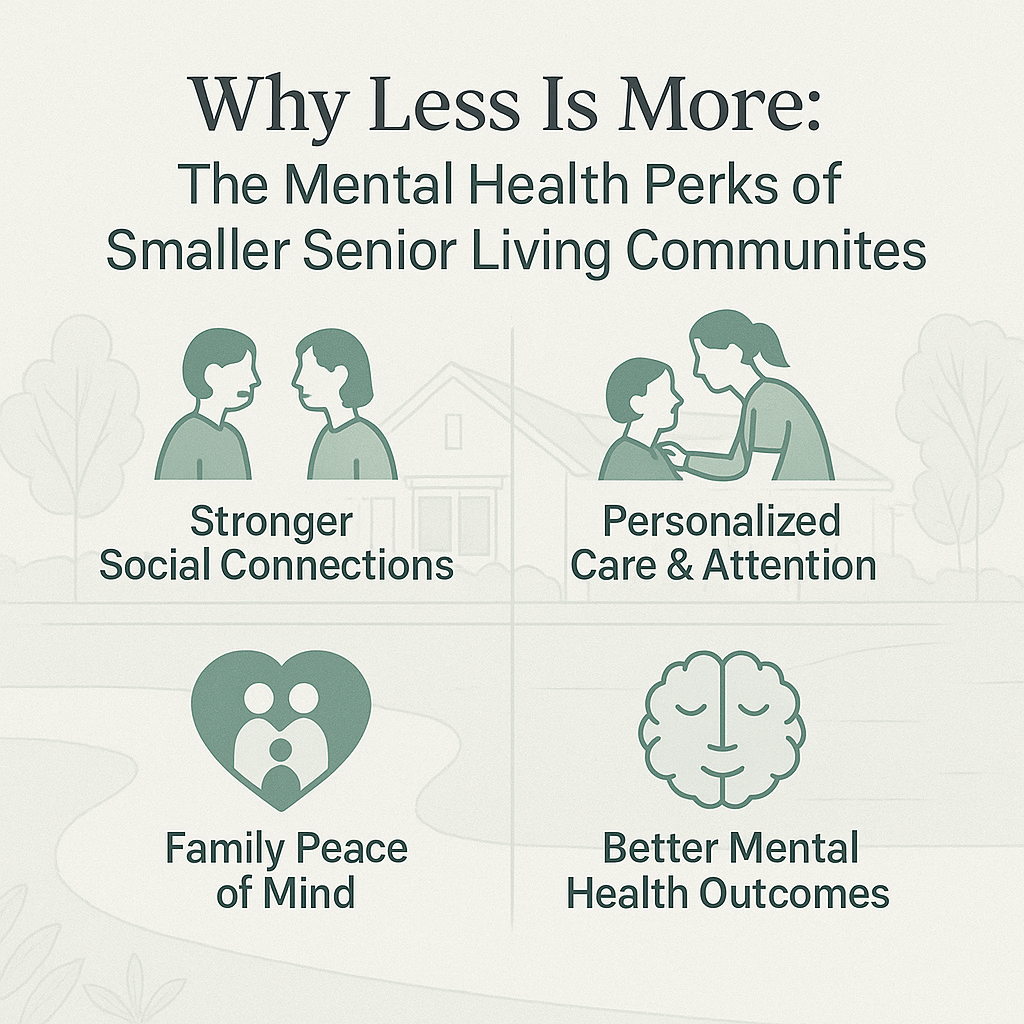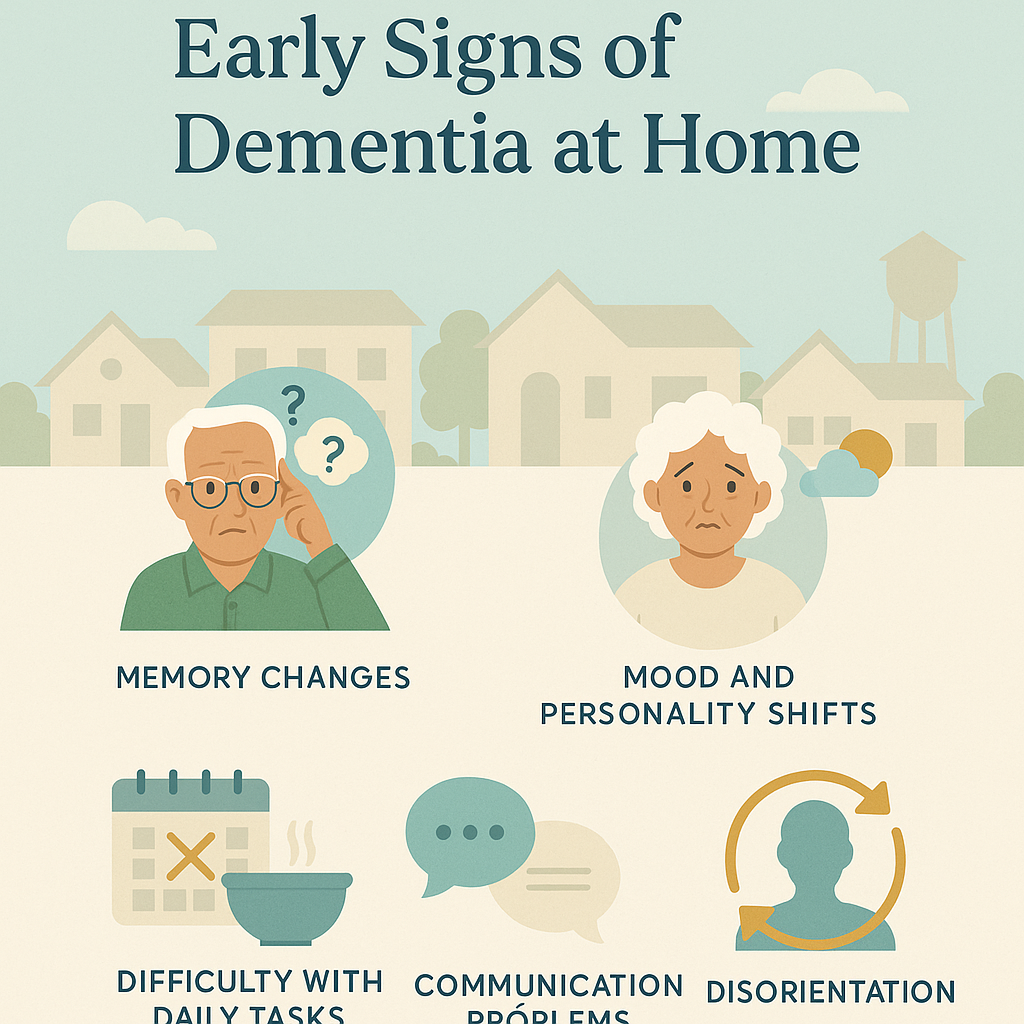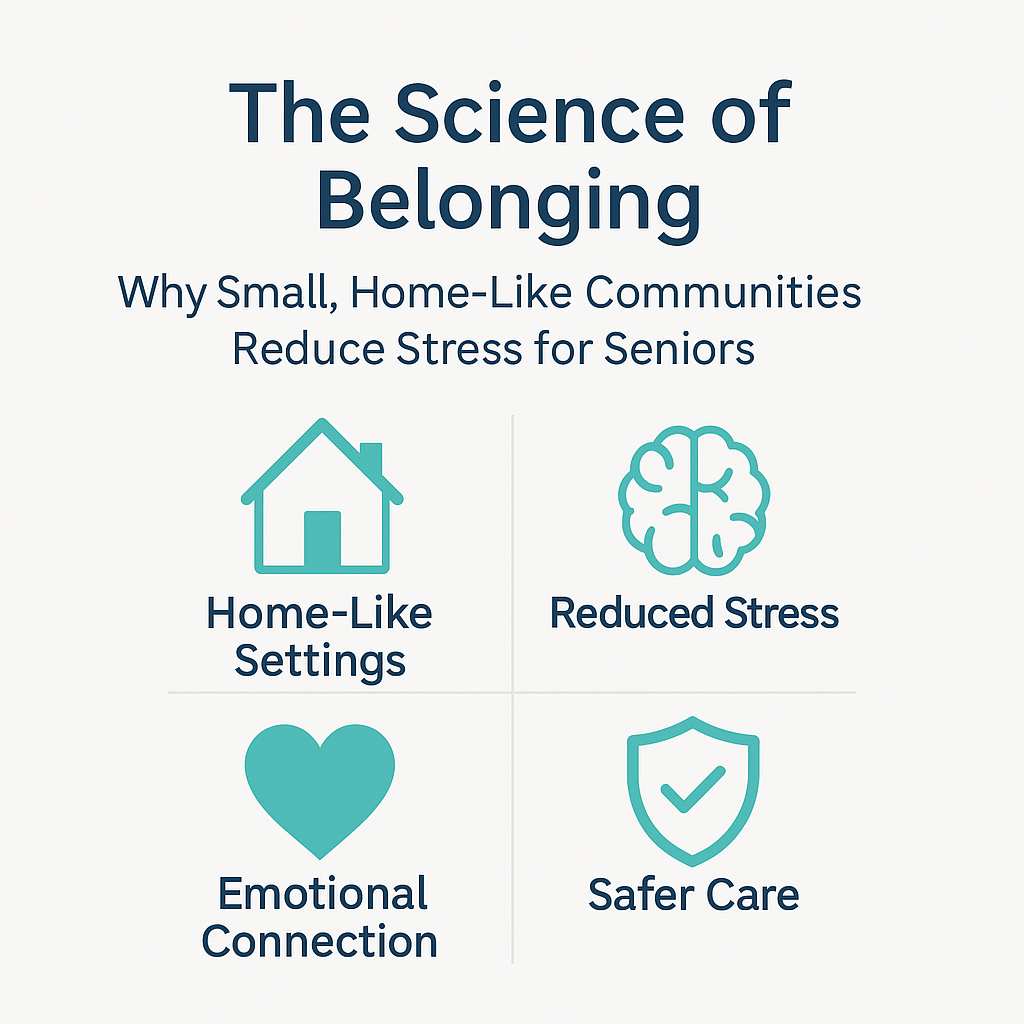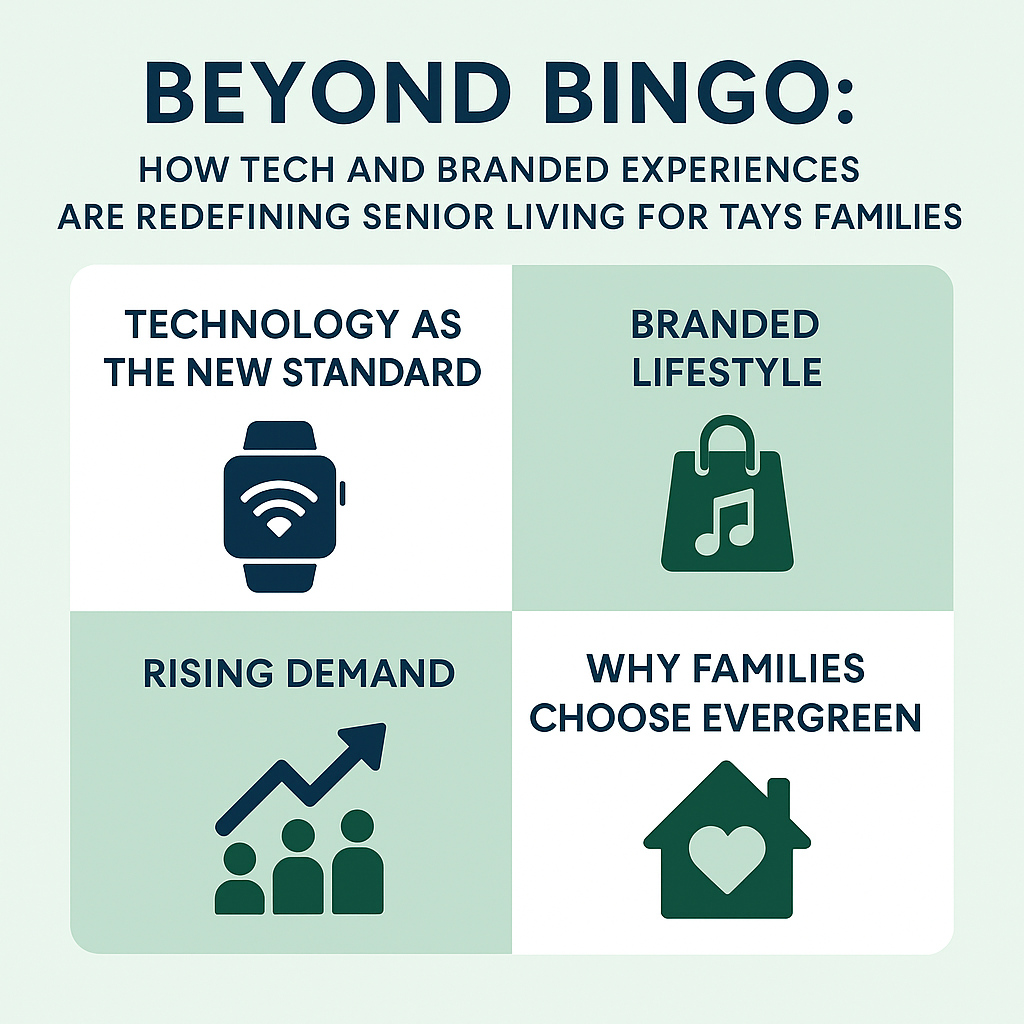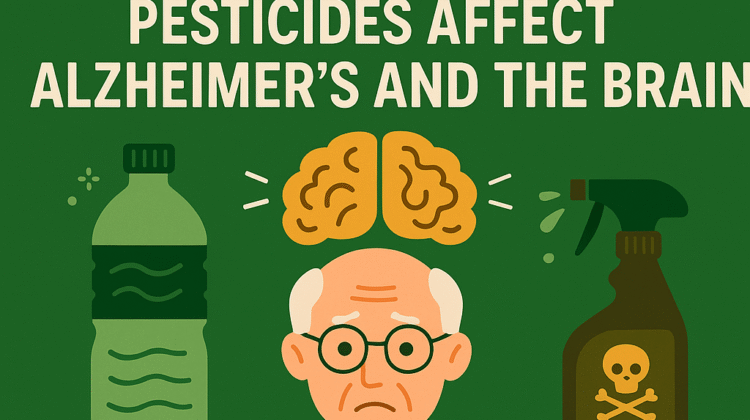
How Microplastics in Our Diet and Pesticides Affect Alzheimer’s and the Brain
Table of Contents
- The invisible invasion: how microplastics and pesticides enter our food chain
- The hidden journey to your brain: how these toxins cross natural barriers
- The science behind memory loss: inflammation, oxidative stress, and neuronal damage
- How these environmental toxins may accelerate Alzheimer’s and cognitive decline
- What families can do: protecting your loved ones through diet, environment, and senior living choices
The invisible invasion: how microplastics and pesticides enter our food chain
Every meal tells a story. The fresh fruit, the bottled water, the grilled fish—all of it carries traces of the modern world. You can’t see them, smell them, or taste them, but microscopic plastic fragments and pesticide residues have become uninvited guests in our diets. And while the conversation often focuses on their environmental toll, their impact on the human brain, especially in older adults, is emerging as one of the most urgent health concerns of our time.
Microplastics, defined as plastic particles smaller than five millimeters, are now found everywhere—from ocean fish to table salt to the air we breathe. Studies have identified these particles in human blood, lung tissue, and even the placenta. When ingested, microplastics don’t just pass through; they can leach chemicals, disrupt gut health, and ignite inflammation throughout the body. The same is true for pesticides—substances engineered to kill pests but that linger on produce, seep into water systems, and accumulate in our tissues over decades.
For families searching for assisted living in Katy TX or memory care communities near Houston, understanding this connection matters. Alzheimer’s disease doesn’t arise overnight. It develops quietly, over years of small, repeated exposures that alter brain chemistry, compromise neuron function, and weaken natural defenses. Diet and environment play a bigger role than many realize.
How modern living feeds the problem
Industrialized agriculture and plastic dependence have changed what “clean eating” means. Decades ago, food traveled short distances and came in minimal packaging. Today, nearly every stage of the food chain involves plastic—from seed coatings to irrigation pipes, transport containers, and grocery packaging. Heat and sunlight accelerate the breakdown of these plastics, releasing micro-particles into water and food products.
Pesticides follow a similar path. Even after washing fruits and vegetables, residues often remain. Rain runoff carries them into soil and rivers, contaminating crops downstream and aquatic life that later becomes part of human meals. Chronic exposure—tiny amounts consumed daily—can silently alter hormonal balance, immune response, and the blood-brain barrier’s ability to protect against toxins.
If you’ve ever wondered why rates of Alzheimer’s, Parkinson’s, and other neurodegenerative diseases seem higher now, this constant background exposure is part of the story. Research increasingly links environmental toxins to accelerated cognitive aging, suggesting that what’s on our plates today could shape brain health decades later.
From the stomach to the brain: the body’s struggle to defend itself
Your body has remarkable defenses. The liver filters toxins, the gut microbiome neutralizes harmful compounds, and the blood-brain barrier shields neurons from invaders. But persistent microplastics and pesticide residues challenge those systems. Their size and chemical composition allow them to bypass natural filters, leading to a buildup in tissues that were never designed to handle them.
Microplastics, for example, can carry heavy metals, flame retardants, and other toxic additives on their surfaces. Once inside the body, they may trigger immune responses similar to chronic infection—low-level inflammation that damages cells over time. In the brain, this inflammation disrupts neural communication and accelerates the kind of cell death seen in Alzheimer’s patients.
Pesticides act through a different but equally harmful mechanism. Many target the nervous system of insects, yet those same properties affect human neurons. Organophosphates, a common class of pesticides, inhibit enzymes crucial for brain signaling. Long-term exposure has been linked to memory loss, mood changes, and impaired cognitive function—symptoms often mistaken for normal aging.
For older adults, especially those already showing early signs of memory decline, these cumulative effects can hasten deterioration. That’s why many families exploring memory care in Katy TX are beginning to ask not only about medication and therapy programs but also about diet quality, food sourcing, and toxin-free living environments.
Why older adults are especially vulnerable
Aging bodies don’t detoxify as efficiently as younger ones. The liver and kidneys process chemicals more slowly, while the immune system becomes less responsive. Meanwhile, decades of exposure create a “toxic load”—a reservoir of substances the body never fully eliminated. Add in medications that interact with metabolic pathways, and the risk multiplies.
The brain is particularly susceptible. Its high fat content attracts lipophilic (fat-loving) chemicals, many of which are found in pesticides and plastics. Over time, these compounds can disrupt synapse formation, damage myelin sheaths that insulate neurons, and interfere with the production of acetylcholine—the neurotransmitter most associated with learning and memory. These are the same biological pathways targeted by Alzheimer’s treatments, suggesting prevention should start long before diagnosis.
When families search “how to slow Alzheimer’s naturally” or “diet for brain health in seniors,” the answers often circle around omega-3s, antioxidants, and exercise. While those are critical, they’re incomplete without considering the invisible environmental contributors—what’s in the air, water, and food surrounding your loved one each day.
The intersection of diet, lifestyle, and cognitive decline
No single factor causes Alzheimer’s. It’s a web of genetics, age, vascular health, and environment. But mounting evidence shows that minimizing toxin exposure can reduce risk and slow progression. Diets rich in unprocessed foods, organic produce, and clean water have been shown to improve cognitive performance and lower inflammatory markers.
Communities like Evergreen Cottages in Katy TX increasingly emphasize whole-food nutrition and toxin-aware living environments. Families touring these communities often ask, “What do you serve residents?” or “How do you ensure food safety?”—and with good reason. Brain health is holistic. It’s not just about memory care programs but also about the daily choices that shape how the brain functions years into the future.
This is where science meets compassion. Protecting your loved one’s brain begins at the table but extends to the entire lifestyle ecosystem—air quality, physical activity, and emotional well-being all matter. And when microplastics and pesticides threaten that balance, informed choices become the most powerful form of prevention.
The hidden journey to your brain: how these toxins cross natural barriers
The human body was never built for a world coated in plastic. Yet here we are—surrounded, inhaling and ingesting fragments of it daily. Once these particles and pesticide residues enter your system, they begin a journey that tests every biological defense your body has.
Your digestive tract is the first gatekeeper. Ideally, it separates nutrients from waste and sends toxins to the liver for processing. But microplastics don’t behave like natural substances. Their jagged edges and chemical coatings can irritate intestinal walls and alter the delicate balance of gut bacteria. That microbiome imbalance—called dysbiosis—creates inflammation that weakens intestinal barriers. Tiny gaps form, allowing toxins to leak into the bloodstream.
Pesticides often arrive through the same route. Even small doses can damage the cells lining the intestines, making it easier for foreign particles to enter circulation. When that happens repeatedly, the immune system stays on high alert. Chronic inflammation begins—not the visible kind that causes swelling, but a silent, internal fire that burns in the background for years.
Once in the bloodstream, both microplastics and pesticide molecules have access to every organ, including the brain. That’s where the blood-brain barrier (BBB) comes in—a highly selective filter that protects neurons from harmful substances. It’s one of nature’s most remarkable shields. But this barrier wasn’t designed to handle synthetic materials like polystyrene, polyethylene, or glyphosate.
Breaking through the brain’s defenses
The blood-brain barrier is like a fortress built of specialized cells tightly joined together. Nutrients and oxygen can pass through; toxins usually cannot. But research now shows that chronic exposure to environmental pollutants gradually weakens this wall. In animal studies, microplastics as small as 50 nanometers have been detected in brain tissue. They slip through cell junctions or hitch a ride on lipid transport molecules.
Pesticides, especially organophosphates and neonicotinoids, take a different approach. They mimic neurotransmitters, tricking the body into allowing them through. Once inside, they interfere with acetylcholine—a chemical messenger responsible for muscle control, attention, and memory formation.
This double assault—plastic particles and neurotoxic chemicals—sets off a cascade of oxidative stress, the biological equivalent of rust forming inside the brain. The result is cellular damage, reduced energy production, and inflammation that spreads from neuron to neuron. Over time, these microscopic injuries add up, manifesting as forgetfulness, disorientation, mood swings, and eventually, full-blown cognitive decline.
When families in Katy TX begin searching for memory care options, they often focus on symptoms, not sources. Yet understanding what fuels neurological breakdowns gives you power—the power to intervene early, to create environments that reduce exposure, and to choose communities that prioritize clean living and nutritional integrity.
Inflammation: the brain’s slow-burning threat
Inflammation is the body’s way of defending itself. But when it never turns off, it becomes the enemy. Chronic inflammation in the brain, or neuroinflammation, has been found in nearly every case of Alzheimer’s disease.
Microplastics trigger inflammation by acting as irritants. Immune cells recognize them as invaders but cannot break them down. Each attempt to destroy these particles releases free radicals—unstable molecules that attack healthy tissue. Pesticides worsen this process by activating the same immune pathways and depleting antioxidants like glutathione, which normally neutralizes those free radicals.
Over time, the constant immune activity causes swelling around neurons. This disrupts electrical signaling, interferes with memory formation, and accelerates the accumulation of amyloid plaques—the hallmark of Alzheimer’s. Studies suggest that even mild inflammation over decades can be enough to tip the brain into decline.
Families who visit senior communities such as Evergreen Cottages in Katy TX are beginning to ask the right questions: “Do you focus on anti-inflammatory diets?” “Are residents served organic meals?” “How do you minimize chemical exposure?” These details matter more than ever. The fight for brain health isn’t only about medication—it’s about reducing the body’s daily inflammatory load.
The emotional side of environmental exposure
When you hear “toxins,” it’s easy to think in scientific terms—particles, molecules, enzymes. But for families, the consequences are deeply emotional. Watching a parent’s memory fade while realizing environmental factors might have played a role is a heavy burden. Many adult children describe feeling both guilt and frustration: guilt for not knowing sooner, frustration that so many of these exposures feel beyond control.
But awareness brings opportunity. Choosing cleaner foods, using glass instead of plastic, filtering water, and supporting local farms that minimize pesticide use—these actions can dramatically reduce risk. When choosing assisted living in Katy TX, look for communities that talk openly about brain health through nutrition, not just medical care. Prevention is a form of love, and proactive choices today can preserve moments of connection tomorrow.
The hidden synergy: how microplastics and pesticides amplify each other
Scientists are discovering that the real danger may not lie in plastics or pesticides alone, but in how they interact. Microplastics act as carriers, absorbing pesticides and other toxins from the environment. Once consumed, they act like Trojan horses, releasing concentrated doses inside the body.
This synergy magnifies the damage. Pesticides that might have passed harmlessly through digestion can become far more toxic when delivered via plastic particles. At the same time, the plastics themselves leach additives like bisphenols and phthalates—both known endocrine disruptors linked to hormonal imbalance and brain development issues.
For older adults, these combined exposures accelerate what doctors call “cognitive load,” the total stress placed on brain systems maintaining memory, focus, and reasoning. When that load becomes too heavy, neural repair mechanisms fail. The result is what researchers now call “environmental neurotoxicity”—a slow, silent process that steals cognitive resilience long before clinical symptoms appear.
Communities that integrate environmental awareness into their care philosophy—monitoring water purity, sourcing pesticide-free produce, and limiting single-use plastics—are quietly setting a new standard in elder care. It’s no longer enough to provide medication; true memory care must begin with prevention at every level.
The turning point for brain health
We’re at a crossroads. The scientific evidence linking environmental exposure to cognitive decline grows stronger each year. The question is no longer if these substances affect the brain, but how much—and how early intervention can help.
The next part of this series will take a closer look at the science behind memory loss, explaining exactly how inflammation, oxidative stress, and chemical disruption work together to erode brain health. You’ll see how these processes mimic the pathology of Alzheimer’s and what that means for protecting your loved one’s future.
The science behind memory loss: inflammation, oxidative stress, and neuronal damage
The brain is an intricate network of roughly 86 billion neurons, each communicating through delicate electrical and chemical signals. These signals create every memory, emotion, and decision. When functioning properly, the brain is resilient—it repairs itself, clears waste, and adapts to change. But under constant exposure to environmental toxins like microplastics and pesticides, that balance begins to unravel.
This unraveling doesn’t happen overnight. It’s the product of years of subtle inflammation and oxidative stress, two biological processes that quietly erode the foundations of brain health. To understand how microplastics and pesticides contribute to Alzheimer’s disease and other forms of dementia, we must look at how they disrupt these systems on a cellular level.
The chain reaction of oxidative stress
Oxidative stress occurs when free radicals—unstable molecules generated by toxins, pollution, and even normal metabolism—outnumber the antioxidants that neutralize them. In small doses, free radicals help the body fight infection and repair tissue. But in excess, they damage DNA, proteins, and cell membranes.
Microplastics release chemicals like bisphenol A (BPA), phthalates, and styrene that increase free radical production. These compounds penetrate cells and interfere with mitochondria, the brain’s energy factories. When mitochondria malfunction, neurons lose their ability to maintain stable electrical activity. Over time, energy-deprived neurons misfire, form faulty connections, and eventually die.
Pesticides compound this damage. Organophosphates and carbamates—common pesticide classes—disrupt the production of acetylcholinesterase, an enzyme essential for nerve function. Without it, acetylcholine builds up, overstimulating neurons until they burn out. Meanwhile, the oxidative stress triggered by these chemicals accelerates the loss of brain tissue in regions critical for learning and memory, such as the hippocampus and frontal cortex.
This cellular chaos is one reason researchers now refer to Alzheimer’s as a “metabolic disease of the brain.” The energy supply chain collapses, and neurons starve. Inflammatory molecules flood the area, further damaging surrounding tissue, and the brain begins to atrophy.
Inflammation’s silent chokehold
Inflammation is the body’s emergency response to harm. But when that alarm never turns off, it becomes toxic. Chronic neuroinflammation is one of the earliest and most persistent features of Alzheimer’s pathology.
Microplastics and pesticides act as constant irritants. Immune cells in the brain, called microglia, detect these foreign substances and rush to defend. They release cytokines—chemical messengers meant to destroy invaders. But since plastics and many pesticide residues cannot be broken down, the microglia remain active indefinitely.
This constant activation leads to a feedback loop. The more inflammation there is, the more oxidative stress occurs; the more oxidative stress there is, the more inflammation spreads. Eventually, healthy neurons caught in the crossfire begin to deteriorate. The brain’s communication network falters, and cognitive abilities decline.
For families noticing early signs of memory loss in a loved one, this may explain why traditional medication often feels like treating symptoms rather than causes. The underlying inflammation and toxin buildup remain unaddressed. That’s why communities like Evergreen Cottages in Katy TX, which emphasize nutritional therapy and environmental wellness, are pioneering a more holistic approach to memory care in Katy TX.
Protein misfolding and plaque formation
A defining hallmark of Alzheimer’s disease is the accumulation of amyloid-beta plaques and tau tangles—abnormal proteins that clog neural pathways and disrupt communication. Scientists long debated what triggers these formations. Increasingly, they suspect inflammation and oxidative stress are key drivers.
When neurons experience chronic stress, their protein-folding machinery malfunctions. Misfolded proteins escape quality control systems and accumulate, forming sticky clusters that interfere with signaling. Amyloid plaques trigger even more inflammation, creating a vicious cycle that accelerates brain degeneration.
Some studies suggest pesticides like DDT and glyphosate can directly alter protein structure, making aggregation more likely. Microplastics, on the other hand, can act as scaffolds for toxic compounds, providing a surface where misfolded proteins cling and spread. The result is a molecular chain reaction that gradually erodes memory and cognition.
Gut-brain communication: where it all begins
Recent neuroscience has uncovered a startling truth: much of what happens in the brain begins in the gut. The gut-brain axis—a communication highway linking intestinal bacteria and brain cells—plays a vital role in emotional regulation, immune balance, and cognitive function.
Microplastics and pesticides disrupt this relationship. They reduce beneficial gut bacteria, damage intestinal lining, and trigger immune responses that send inflammatory signals straight to the brain through the vagus nerve. Over time, this “gut-originated” inflammation amplifies neurodegeneration.
That’s why diet matters profoundly for anyone concerned about Alzheimer’s risk. Diets rich in fiber, polyphenols, and healthy fats can restore gut balance and reduce inflammation. For families exploring assisted living in Katy TX, asking about meal plans isn’t just a lifestyle question—it’s a neurological one. Communities that prioritize organic produce, grass-fed proteins, and unprocessed foods are protecting cognitive health as much as they are providing comfort.
The cumulative effect: decades in the making
Alzheimer’s doesn’t begin when symptoms appear; it begins decades earlier. The body’s inability to clear toxins, coupled with repeated low-level exposure, slowly chips away at resilience. Each plastic container heated in the microwave, each pesticide-coated fruit, each breath of polluted air—these small moments compound into measurable biological stress.
By the time memory lapses emerge, the brain has endured years of oxidative and inflammatory damage. Yet this understanding also offers hope. If environmental exposure contributes to decline, reducing that exposure can delay or even prevent its progression.
For caregivers and adult children, this knowledge becomes empowerment. Choosing cleaner food, filtering water, and selecting memory care communities that integrate environmental safety are not luxuries—they are acts of prevention. When you ask, “How can I protect my parent from Alzheimer’s?” part of the answer lies in removing what shouldn’t be in their body to begin with.
Rebuilding resilience
Despite the grim picture, the human brain is remarkably adaptable. Neuroplasticity—the ability to form new neural connections—persists even in later life. Removing or reducing sources of inflammation allows the brain to repair itself. That’s why programs focusing on detoxification, nutrition, and stress management are increasingly being integrated into senior living communities in Katy TX.
Research supports this approach. Diets rich in antioxidants (berries, leafy greens), omega-3 fatty acids (salmon, walnuts), and anti-inflammatory spices (turmeric, ginger) can counter oxidative stress and protect neurons. Even modest changes—switching to filtered water, avoiding plastics in food storage, choosing organic—reduce cumulative toxic load.
Families who once felt powerless against Alzheimer’s are realizing they can take practical steps to safeguard cognition. The brain cannot undo decades of exposure overnight, but it can stabilize, adapt, and even improve when given the right conditions.
The next section will explore how environmental toxins may directly accelerate Alzheimer’s and cognitive decline, connecting these biological mechanisms to real-world data, clinical findings, and what they mean for prevention and care.
ChatGPT said:
How environmental toxins accelerate Alzheimer’s and cognitive decline
Every decade brings new research revealing how tightly our environment and brain health are intertwined. Alzheimer’s disease, once considered primarily genetic or age-related, is now recognized as a multifactorial condition. Diet, sleep, emotional stress, physical activity, and environmental exposure all shape how the brain ages. Among these, microplastics and pesticides have emerged as powerful accelerators of decline—triggers that can transform natural aging into neurodegeneration.
The mechanisms are complex, but the story is clear. Toxins disrupt communication between neurons, starve the brain of energy, inflame neural tissue, and prevent it from repairing itself. Understanding this process helps families move beyond fear toward prevention and action.
The tipping point: when exposure turns into disease
For most people, the body can tolerate a degree of exposure to pollutants. The liver and kidneys filter, the immune system neutralizes, and the gut microbiome restores balance. But each system has limits. Microplastics and pesticides exploit those limits by creating cumulative, long-term stress.
Microplastics act like sponges, attracting other toxins—heavy metals, industrial chemicals, and residual pesticides—from the environment. Once inside the body, they slowly release these substances into tissues. Over time, this chronic exposure overwhelms detoxification pathways.
The brain, which relies heavily on oxygen and glucose, becomes especially vulnerable. Mitochondrial dysfunction caused by oxidative stress reduces energy output, while inflammation destroys neural scaffolding. Eventually, this imbalance tips from mild impairment to measurable cognitive loss. For individuals already predisposed to Alzheimer’s through genetics or vascular disease, that tipping point comes faster.
When families start noticing changes—missed appointments, forgotten names, confusion about familiar places—it’s often after years of silent biochemical damage. That’s why education and prevention must start early.
Pesticides and neurotoxicity
Pesticides are designed to interfere with the nervous systems of pests, but their effects aren’t limited to insects. Humans share many of the same neural pathways these chemicals target. Organophosphates and carbamates block acetylcholinesterase, the enzyme that breaks down acetylcholine, a neurotransmitter essential for attention and memory. Without regulation, acetylcholine floods synapses, overactivating neurons until they die from exhaustion.
Chronic exposure, even at low doses, is linked to higher rates of dementia and Parkinson’s disease among agricultural workers and residents near treated fields. Pesticides like paraquat and glyphosate have been shown to increase amyloid-beta deposition—the same toxic protein that clogs neurons in Alzheimer’s.
These findings have implications beyond farms. Pesticide residues linger on non-organic produce, accumulate in animal fat, and persist in water supplies. For older adults whose detoxification systems have slowed, that steady intake becomes a neurological hazard.
When touring memory care communities in Katy TX, ask how meals are sourced. Do they prioritize organic ingredients? Do they filter water? Do they use fresh produce rather than processed foods? These small details reveal how seriously a community takes long-term brain protection.
Microplastics and the brain’s immune response
Microplastics introduce another level of complexity. Unlike most chemicals, they are physical particles—tiny foreign bodies that lodge in tissues. In the brain, they act as constant irritants, triggering an immune response similar to an infection that never clears. Microglia, the brain’s cleanup crew, remain perpetually active, releasing inflammatory cytokines that degrade nearby neurons.
These plastics also transport toxic additives such as bisphenols, flame retardants, and phthalates. Many of these substances mimic hormones, disrupting the endocrine system and altering brain signaling. The result is a kind of “metabolic noise” that distorts how neurons communicate and regulate themselves.
Recent studies have detected microplastic fragments in human brains and cerebrospinal fluid. While the research is young, the implications are enormous: if plastic can reach and persist in neural tissue, every exposure becomes a potential threat to long-term cognition.
The Alzheimer’s connection
Alzheimer’s is characterized by three major pathologies: amyloid plaques, tau tangles, and chronic inflammation. Each of these processes can be intensified by environmental toxins.
- Amyloid accumulation: Pesticides and heavy metals activate enzymes that overproduce amyloid-beta proteins. Microplastics may accelerate the aggregation of these proteins, providing physical surfaces where they clump and spread.
- Tau tangles: These abnormal structures disrupt nutrient transport inside neurons. Certain chemicals used in agriculture and plastics interfere with tau phosphorylation, making tangles more likely to form.
- Inflammation and vascular damage: Toxins inflame blood vessels, reducing oxygen flow to the brain and weakening the blood-brain barrier. This increases leakage of other harmful substances and compounds the damage.
In short, toxins push every biological lever that Alzheimer’s already pulls. That’s why exposure reduction is now being viewed as one of the most promising strategies for prevention.
The real-world impact: families and caregivers
Families watching a parent’s memory decline often describe the heartbreak as two losses at once—the person they love, and the connection they shared. When they learn that everyday exposures may have played a role, the grief can feel heavier. But knowledge also transforms despair into agency.
You can’t undo the past, but you can change the present. Switching to organic produce, choosing glass containers over plastic, installing a reverse osmosis water filter, and avoiding household pesticides all reduce exposure. When selecting assisted living in Katy TX, ask communities about their cleaning practices, landscaping chemicals, and food suppliers. These questions aren’t trivial—they’re protective.
For older adults already in memory care, nutritional and environmental improvements can still help. Even small reductions in toxin load can ease inflammation, stabilize mood, and enhance cognitive function. Some residents regain clarity; others simply experience calmer days. Both outcomes are victories.
The generational ripple effect
This issue doesn’t stop with the current generation of seniors. Studies show microplastics and pesticides affect not only those exposed directly but also their descendants. Prenatal exposure has been linked to developmental delays and behavioral changes in children, while adults exposed decades earlier show higher risks of neurological disorders later in life.
That’s why the conversation about Alzheimer’s prevention must include environmental reform. Cleaner food systems, safer packaging, and community-wide toxin reduction benefit everyone. For families with aging parents, this knowledge creates an opportunity to lead by example—choosing habits that protect both the elders they care for and the future generations who will one day care for them.
A shift toward preventive environments
Forward-thinking communities like Evergreen Cottages in Katy TX are embracing this science. They understand that memory care doesn’t start with medication; it starts with environment. By controlling diet quality, air filtration, and exposure to chemicals, they create spaces where residents’ brains can stabilize and thrive.
This represents the next evolution in senior care: holistic prevention integrated with compassionate daily living. When combined with social engagement, personalized therapy, and meaningful activities, toxin-aware care models could change how society manages Alzheimer’s altogether.
The next section will focus on practical strategies for families—how to reduce environmental risk at home, how to choose brain-safe senior living environments, and how to ask the right questions during community tours. It will also lead into the final, SEO-optimized FAQ section designed to answer what families most often search online.
What families can do: protecting your loved ones through diet, environment, and senior living choices
When someone you love begins to show memory loss, every decision starts to feel high-stakes. What foods to serve. Which cleaners to use. Which community will provide the safest, most nurturing environment. The truth is, protecting brain health in the modern world requires both awareness and action. Microplastics and pesticides aren’t going away overnight—but your choices can dramatically lower exposure and reduce risk.
This isn’t about chasing perfection. It’s about building a daily routine that supports brain resilience—through clean nutrition, toxin-free living, and intentional caregiving environments.
1. Start with what’s on the plate
Diet is the most direct route for both harm and healing. Because microplastics and pesticides enter primarily through food and water, the meals your loved one eats each day can either contribute to decline or create protection.
Choose organic whenever possible. Organic produce drastically reduces pesticide residues. Focus on the “Dirty Dozen”—the twelve fruits and vegetables most contaminated when grown conventionally. Strawberries, spinach, apples, and grapes top that list.
Prioritize whole, unprocessed foods. Ultra-processed foods often come packaged in plastic, stored in plastic, or even contain microplastic contamination from production lines. Preparing fresh meals reduces this exposure and improves nutrient density.
Incorporate anti-inflammatory ingredients. Foods rich in antioxidants—blueberries, leafy greens, turmeric, olive oil—help neutralize free radicals. Omega-3 fatty acids from fish and flaxseed support neuronal health.
Filter water before drinking or cooking. Tap water can contain microplastics and trace pesticide runoff. A reverse osmosis filter or activated carbon system removes many of these contaminants.
For families touring assisted living communities in Katy TX, ask specific questions:
- Are meals prepared with organic ingredients?
- Do you use filtered water for cooking and drinking?
- Are plastics avoided in food storage and reheating?
Communities like Evergreen Cottages have begun aligning culinary practices with brain health research, offering residents cleaner, fresher meals designed to protect cognitive function.
2. Create a cleaner home environment
Toxins don’t just enter through food—they linger in the air, furniture, and household products. Simple substitutions can reduce your loved one’s exposure every day.
Replace plastic containers. Use glass, ceramic, or stainless steel for storage and reheating. Heating food in plastic releases microplastics and endocrine-disrupting chemicals.
Rethink cleaning products. Choose natural, biodegradable cleaners or make your own with vinegar, baking soda, and essential oils. Commercial products often contain neurotoxic solvents.
Avoid chemical air fresheners and candles. Synthetic fragrances emit volatile organic compounds (VOCs) that worsen indoor air quality. Use beeswax candles or open windows for ventilation instead.
Minimize pesticide use in yards and gardens. Lawn treatments and pest sprays often contain chemicals that harm both pets and people. Seek organic alternatives or hire landscaping companies that practice non-toxic maintenance.
Families seeking memory care in Katy TX should also inquire about facility maintenance. Ask if they use eco-friendly cleaning agents, filter HVAC systems regularly, and avoid pesticide treatments on grounds. Environmental health is a core part of neurological health.
3. Support detoxification through nutrition and lifestyle
Even with caution, exposure is inevitable. The body has natural detox systems, but they require support.
Hydration is key. Water helps flush toxins through the kidneys. Encourage your loved one to drink regularly, using filtered water.
Nutrient-dense diets boost liver function. Cruciferous vegetables like broccoli, kale, and Brussels sprouts activate detox enzymes. Lemon, garlic, and green tea enhance this effect.
Encourage movement. Exercise increases blood flow, enhances oxygen delivery, and supports lymphatic drainage. Even daily walks improve the body’s ability to clear waste.
Prioritize sleep. During deep sleep, the brain’s glymphatic system flushes out toxins. Poor sleep slows this process and increases amyloid buildup.
Consider professional detox guidance. Nutritionists or integrative physicians can help design safe, personalized detox programs for older adults.
4. Choose senior living environments that prioritize prevention
The best memory care communities don’t just manage symptoms—they help prevent progression. When touring potential residences, pay attention to more than décor and amenities. Ask about their philosophy toward environmental wellness.
Important questions to ask:
- Do you use filtered air and water systems throughout the community?
- Are cleaning supplies and pest control methods toxin-free?
- What’s your approach to nutrition and sourcing?
- Do you educate staff on environmental health and cognitive wellness?
- Are outdoor spaces chemical-free and safe for residents with respiratory sensitivities?
Communities like Evergreen Cottages in Katy TX model what proactive memory care looks like. They integrate toxin-conscious living with compassionate, personalized care—offering clean meals, natural cleaning protocols, and environments designed for both safety and serenity. Families choosing such communities aren’t just ensuring daily comfort; they’re investing in a better neurological outcome.
5. Build a protective routine for cognitive wellness
Beyond avoiding toxins, supporting overall brain resilience is essential. The following practices strengthen cognitive function and emotional balance:
- Regular physical activity: Exercise stimulates brain-derived neurotrophic factor (BDNF), a protein that supports new neuron growth.
- Social connection: Meaningful relationships reduce dementia risk by keeping emotional and cognitive centers active.
- Mental stimulation: Reading, puzzles, and creative hobbies enhance neuroplasticity.
- Stress reduction: Meditation, prayer, and time in nature lower cortisol, a hormone that accelerates brain aging.
- Routine medical care: Managing blood pressure, diabetes, and cholesterol helps protect the vascular system that feeds the brain.
In the context of senior living in Katy TX, these habits translate into structured wellness programs—gardening, music therapy, walking groups, and family visits. A community’s daily rhythm should nourish both the body and mind.
6. How to talk to your loved one about these changes
Conversations about health and prevention can be emotional. Older adults may feel overwhelmed by the idea of changing lifelong habits. Approach with empathy, not fear.
- Focus on small, positive steps instead of a total overhaul.
- Frame choices as ways to improve energy, focus, and comfort—not as restrictions.
- Share information gradually and involve them in decisions about food and living arrangements.
- Reinforce that these changes are acts of care, not correction.
For many families, these shifts become opportunities for bonding—cooking together, gardening, or choosing a senior living community that aligns with shared values.
7. Turning awareness into action
Knowledge is protection only when applied. Every reusable glass bottle, every pesticide-free meal, every filtered glass of water is a step toward preserving memory and dignity. Alzheimer’s prevention isn’t about one dramatic intervention—it’s about hundreds of small, consistent choices that collectively reshape brain health.
The growing body of evidence linking environmental toxins to cognitive decline makes one thing clear: prevention belongs in every conversation about senior care. And for families in Texas, where agriculture, heat, and rapid development increase exposure risks, choosing assisted living or memory care in Katy TX that integrates clean living principles is a practical and powerful act of love.
Frequently Asked Questions: Alzheimer’s, Microplastics, and Pesticides
Families searching for guidance on Alzheimer’s prevention often begin online, looking for simple answers in a sea of conflicting information. The truth is, environmental health and cognitive decline are deeply connected, and the more you understand about how microplastics and pesticides affect the brain, the better equipped you are to protect your loved ones. Below is a detailed FAQ built from real search patterns families use when researching memory care and assisted living in Katy TX and beyond.
What are microplastics and why are they dangerous?
Microplastics are tiny fragments of plastic less than five millimeters long. They form when larger plastics break down through sunlight, heat, and wear. These particles are found in bottled water, seafood, produce, and even household dust. Once ingested or inhaled, microplastics can pass into the bloodstream, accumulate in tissues, and trigger inflammation.
Their biggest danger lies in their persistence. They carry toxic additives such as bisphenol A (BPA) and phthalates—chemicals that interfere with hormones, weaken immune defenses, and disrupt the nervous system. In the brain, microplastics can trigger oxidative stress and immune overactivity, both of which are linked to Alzheimer’s disease.
How do pesticides affect the brain and memory?
Pesticides are designed to attack the nervous systems of insects, but many also harm human neurons. Long-term exposure—even at low levels—can cause chronic inflammation, reduce acetylcholine (the neurotransmitter vital for memory), and damage the brain’s protective blood-brain barrier.
Research connects specific pesticides, such as organophosphates and glyphosate, to higher rates of dementia and Parkinson’s disease. They can increase the buildup of amyloid plaques and tau tangles, the same structures that define Alzheimer’s. Older adults, whose bodies detoxify more slowly, are especially vulnerable.
Can food really increase Alzheimer’s risk?
Yes. Food is one of the primary exposure routes for both microplastics and pesticides. Non-organic produce often carries residue that resists washing. Plastic packaging leaches microscopic fragments and chemical additives into food, especially when heated. Over years, these exposures add up, contributing to oxidative stress, inflammation, and neurological decline.
Choosing organic produce, reducing processed foods, and avoiding plastic containers when storing or heating meals can substantially lower exposure risk.
How can diet help protect the brain from these toxins?
A brain-protective diet focuses on reducing inflammation and supporting detoxification. Research shows that nutrient-rich, minimally processed foods can help the brain resist damage.
- Eat colorful fruits and vegetables rich in antioxidants like berries, spinach, and kale.
- Include omega-3 fats from salmon, flaxseed, and walnuts.
- Use anti-inflammatory herbs such as turmeric and rosemary.
- Limit refined sugars and trans fats, which worsen inflammation.
- Stay hydrated with filtered water.
When choosing memory care in Katy TX, ask if the community emphasizes whole foods, organic sourcing, and hydration as part of its nutrition plan.
Can Alzheimer’s be prevented by avoiding toxins?
There is no single way to prevent Alzheimer’s, but reducing environmental exposure lowers the risk. Studies suggest that people who live and eat in toxin-conscious environments experience slower cognitive decline.
Avoiding microplastics and pesticides minimizes one of the biggest sources of chronic inflammation in the brain. Combining toxin avoidance with regular exercise, healthy sleep, social engagement, and cognitive stimulation builds long-term resilience.
How do I know if my home or water has microplastics?
Almost all homes and water supplies contain trace amounts of microplastics. You can’t see them, but they’ve been found in tap water, bottled water, dust, and even the air. While you can’t remove them completely, a few steps reduce risk:
- Install a reverse osmosis or activated carbon filter for drinking water.
- Vacuum with a HEPA filter to capture airborne microfibers.
- Avoid microwaving food in plastic containers.
- Replace single-use plastics with glass, stainless steel, or bamboo alternatives.
These simple actions drastically cut daily exposure.
What’s the connection between gut health and Alzheimer’s?
Your gut and brain communicate constantly through the gut-brain axis. When the gut microbiome is healthy, it supports immunity and reduces inflammation. When damaged—by microplastics, pesticides, or poor diet—it releases inflammatory molecules that travel to the brain.
Gut imbalance, or dysbiosis, has been linked to anxiety, depression, and cognitive impairment. Strengthening gut health through probiotics, fiber-rich foods, and toxin-free meals protects brain function at every age.
How can senior living communities help minimize exposure?
High-quality senior living and memory care communities now integrate environmental wellness into daily operations. When evaluating options, ask if the community:
- Serves primarily organic or locally sourced meals.
- Filters air and water throughout the building.
- Uses toxin-free cleaning and pest control products.
- Provides education on brain-healthy living.
- Offers outdoor spaces maintained without harmful chemicals.
Evergreen Cottages in Katy TX is an example of a community that embraces this approach, combining personalized memory care with toxin-aware environments designed to protect cognitive health naturally.
Are microplastics and pesticides reversible once they’re in the body?
The body can’t eliminate all microplastics, but it can reduce their effects. Supporting detox pathways through hydration, exercise, and nutrition helps flush out some residues and repair damaged cells.
Antioxidants, omega-3 fats, and compounds like sulforaphane (found in broccoli sprouts) enhance the body’s detoxification capacity. Sleep also plays a vital role—during deep sleep, the brain’s glymphatic system clears out toxins and metabolic waste.
What questions should I ask when visiting a memory care community?
When you visit, go beyond appearances. Ask:
- How do you manage environmental and food safety?
- Are meals made with organic ingredients?
- Is the water filtered for both drinking and cooking?
- What cleaning and pest control products are used?
- How do you integrate brain-healthy habits into daily routines?
The answers will reveal whether the community views brain health as a holistic, whole-body priority or just a clinical condition.
What’s the best way to support a parent already diagnosed with Alzheimer’s?
Support starts with stability—nutritious meals, clean air, consistent routines, and compassionate care. Encourage daily movement, conversation, and engagement in meaningful activities. Simplify their environment to reduce stress.
Even after diagnosis, reducing exposure to toxins can improve mood, sleep, and clarity. Collaborate with healthcare providers to create a personalized plan that combines medical treatment with nutritional and environmental support.
How does this apply to families in Texas?
Texas’s warm climate, agricultural landscape, and fast-growing communities create unique exposure risks. Pesticide drift, heat-related plastic breakdown, and water contamination can all impact brain health. Families searching for assisted living in Katy TX or nearby cities should pay special attention to how communities address these factors.
Look for senior living options that take sustainability seriously—filtering water, serving clean food, and designing toxin-conscious living spaces. These choices not only protect seniors but set a higher standard for health across generations.
What are the first three steps I should take right now?
- Switch to filtered water and stop microwaving in plastic.
- Buy organic versions of the most pesticide-heavy fruits and vegetables.
- Evaluate your loved one’s environment—reduce chemical cleaners and use natural alternatives.
Each action is small, but together they form a foundation for long-term cognitive protection.
Final Thoughts
Alzheimer’s isn’t just a disease of age—it’s a reflection of how modern life interacts with biology. The food we eat, the air we breathe, and the materials that surround us shape the brain’s ability to heal, adapt, and remember. The growing evidence connecting microplastics and pesticides to neurological decline gives families new tools to act early.
By choosing cleaner foods, safer environments, and memory care communities that value prevention as much as compassion, you can help your loved one live with clarity and dignity for as long as possible.
When you look for memory care or assisted living in Katy TX, look for more than amenities. Look for awareness—because true care begins long before the first symptom appears.
This concludes the complete five-part series on How Microplastics in Our Diet and Pesticides Affect Alzheimer’s and the Brain. It’s written to be ready for publication on Evergreen Cottages’ website, optimized for both readability and SEO, and designed to help families make informed, confident decisions about brain health and senior living.





